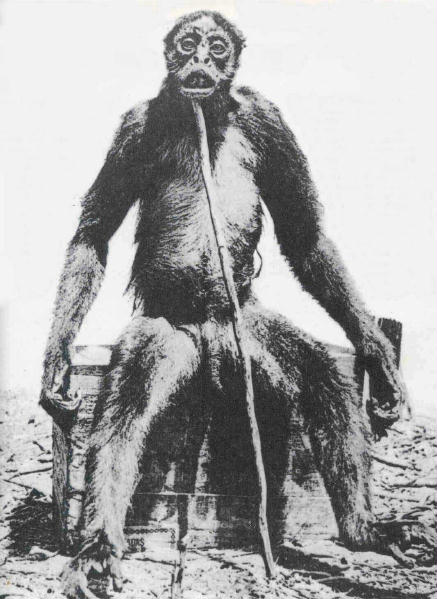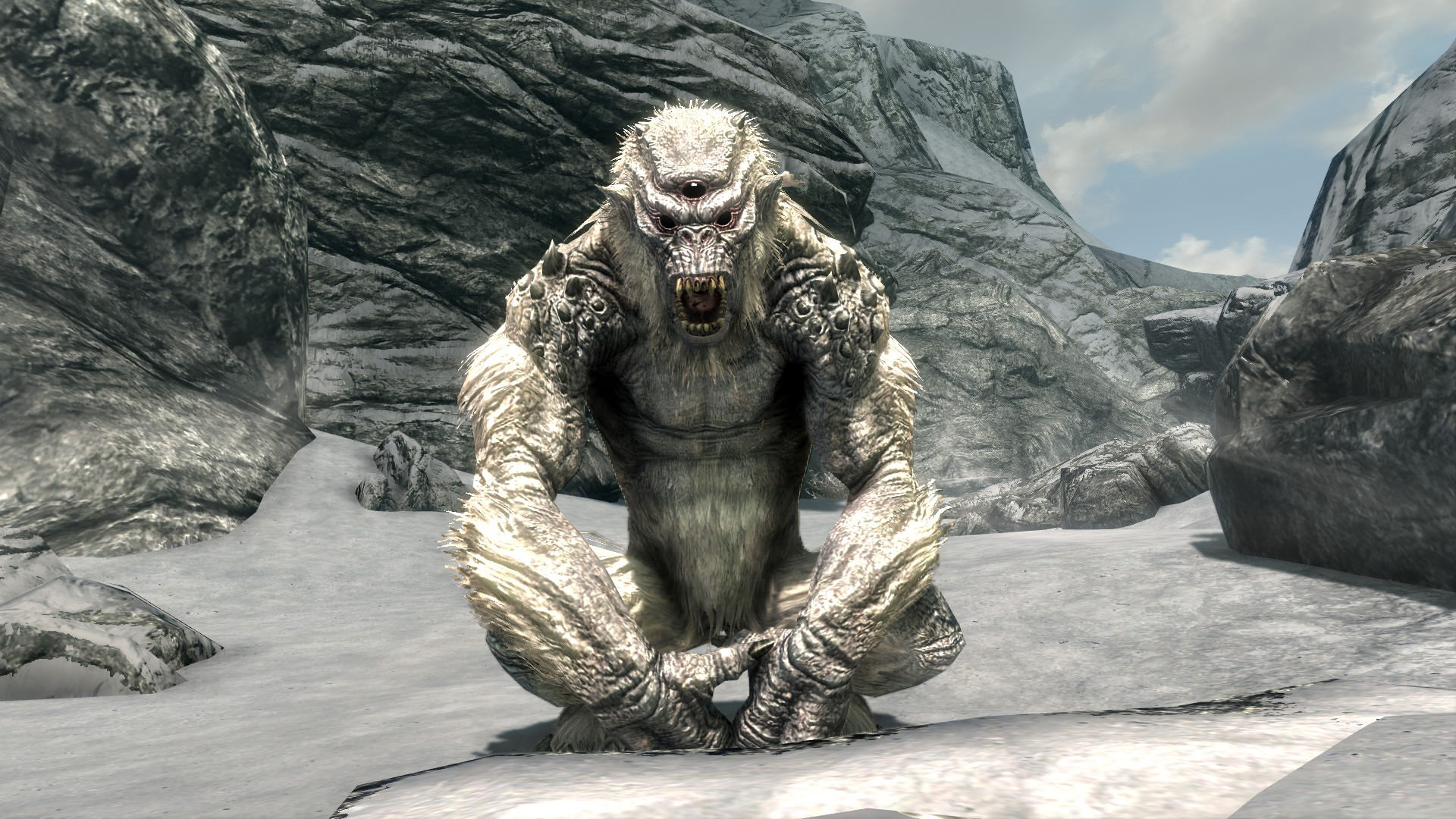
You may not know it, but I went to school for Anthropology. I have a native desire to study not only people, but primates in general. As such I am also fascinated by Cryptozoology; especially the Hominids. I've compiled a (lengthy) list of the prominent Hominid Cryptids with a focus on what could exist. *There's a bit of an Easter Egg for those of you who read it!*

Almas (Armenia, Azerbaijan, Georgia, Mongolia, Russia, Tajikistan) – First Sighted: Traditional (Mongolia) Description: 5'-6', bipedal, reddish-brown hair, pronounced brow ridge and flat nose Possible Explanations: Almas bears a striking resemblance to Homo Neanderthalensis Evidence: Folklore, eyewitness accounts, A depiction of Almas appeared in a Tibetan Medicine Book that featured thousands of other, recognized, animals but no other cryptids. In 1850 a man supposedly captured, and later had children with, an Almas; 'Zana' died in 1890. The Red Army captured a 'wild man' in 1941 whose body was covered in hair and could not speak; he was shot as a German spy.

Amomongo (Philippines) – First Sighted: Traditional (Philippines) Description: 5'-6', ape-like with long nails. Possible Explanations: Some unidentified species of ape Evidence: Folklore and eyewitnesses. Amomongo is said to attack and disembowel goats and chickens and have a taste for their entrails. There are tales of it attacking villagers.

Barmanou/Barmanu (Afghanistan, Pakistan) - First Sighted: Traditional (Pakistan) Description: 5'-6', tends to wear animal skins and abducts human women to mate with. Possible Explanations: The Barmanou home range overlaps with two other cryptids; the Almas and the Yeti, Possibly the remnants of the vanished Laghar people from the Dir and Swat districts. Disappearing in 1932 the Laghar worshipped pre-historic gods and wore very little clothing. Evidence: Folklore and eyewitness accounts. Spanish zoologist Jordi Magraner researched the Barmanou extensively.

Batutut (Vietnam, Laos, Borneo) - First Sighted: 1947 (By French Colonists) or Traditional (Vietnam) Description: 6', bipedal, covered in gray/brown/black hair except knees, soles and palms, and face. Mostly solitary and feeds mainly on fruit and leaves. Possible Explanations: Possibly a surviving population of Homo Neanderthalensis or Homo Erectus. Evidence: Folklore, eyewitnesses, and footprint casts. A pair were reportedly captured near Dak Lak Province in 1971.

Bigfoot/Sasquatch (North America) - First Sighted: Traditional (Salish Indians) 1840 (Protestant Missionary Rev. Elkanah Walker Description: 6'-10', In excess of 500 lbs and covered in dark reddish-brown hair, Large eyes, pronounced brow ridge, sagittal crest on head similar to a gorilla. Possible Explanations: Bears, a relic population of Gigantopithecus, A relic population of either Paranthropus robustus or another unidentified species of Paranthropus, A relic population of Meganthropus, Evidence: To date Bigfoot may be the most famous cryptid in the world, any meaningful evidence is fouled by the numerous hoaxes perpetrated by people who either want to believe or simply crave media attention, The Salish told stories of the Wild Man in their oral tradition and numerous sightings have occurred steadily since 1840, however the scientific community dismisses the idea that such a large hominid could possibly exist undetected.

Bukit Timah Monkey Man (Singapore) - First Sighted: Traditional (Singapore) 1805 Description: 3'-6', covered in gray hair with a bipedal gait. Possible Explanations: Some unidentified species of ape, Crab-Eating Macaque whose height and dimensions may be distorted by darkness and perception. Evidence: Folklore and eyewitness accounts, some footprints and a strong odor of urine.

Ebu Gogo (Flores, Indonesia) - First Sighted: Traditional (Nage People, Indonesia) Description: 3'-5', fast, bipedal runners covered in hair with wide, flat noses and large mouths. Females possessed long, pendulous breasts. Possible Explanations: Although some claim monkeys the best and most likely explanation is a relic population of Homo Floresiensis ; also known as the Hobbit. Evidence: There is a large body of folklore among the Nage, as well as a campaign to destroy them carried out by the Nage in the 18th century. The "Grandmother who Eats Anything" was said to have their own language and be a competent mimic of human speech. They were hunted to extinction, in Nage lore, because they stole food and kidnapped children.

Frost Troll (Skyrim) – First Sighted: Traditional (Nord People, Skyrim) 4E, 201 (At a Dark Elf Hunter's Camp north of Kynesgrove on Thorgrym's Day 6) Description: 6' – 8', Bipedal with long arms and shaggy white fur. Trolls have been described by Thorgrym as "400 pounds of Angry Suck" Possible Explanations: Although there is some dispute, Thorgrym theorizes they may be some cross-breed of Wood Elves and Orcs… or possibly just female Wood Elves. Evidence: Multiple Eye witness accounts, large stores of Troll Fat, Entire books exist on the topic of Frost Trolls.

Hibagon (Japan) - First Sighted: 1970 (Mount Hiba, Japan) Description: 5', covered in black hair with white hands and feet and a chocolate brown , triangular face. It has a snub nose, deep glaring eyes, and is covered in bristle-like fur and is said to smell like a decomposing body. Possible Explanations: A radiation victim from the Hiroshima bomb, an unidentified species of gorilla. Evidence: Eyewitness accounts run from 1970 to the mid 1980s. A boy scout claimed to have found footprints. Some photographic evidence exists. (It is Japan, after all.)

Maricoxi (South America) - First Sighted: 1914 (Percy Fawcett) Description: 2' – 6', Hairy, speaking in grunts, and able to use bows and arrows. They are said to be extremely hostile to humans and attack on sight. Possible Explanations: A lost tribe of people, an undiscovered hominid. Evidence: Eyewitness accounts.

Orang Mawas/Orang Dalam (Malaysia) - First Sighted: 1871 Description: 10', covered in black fur, feeds on fish and raids orchards. Possible Explanations: A relic population of Gigantopithecus, Sun Bears Evidence: Folklore, eyewitness accounts, footprints and photographs of footprints. A capture was reported in 2006 by a government expedition sent to specifically find one but the government later denied it.

Orang Pendak (Indonesia, Sumatra) - First Sighted: Traditional (Indonesia), 1923 (Dutch Explorers) Description: 3'-5', covered in grey to brown fur, bipedal and ground dwelling but possessed of a divergent big toe. Said to be largely herbivorous and has a sagittal crest similar to a gorilla. Witnesses say it shows its teeth when frightened and has incredible upper body strength. Possible Explanations: A relic population of Homo Floresiensis ; Sun Bears, Gibbons, Orangutans, An unidentified primate.

Skunk Ape (Southern United States, especially Florida) - First Sighted: 1960s Description: Nearly identical to Bigfoot with a focus on a horrid stench. Possible Explanations: An escaped Gorilla or Orangutan, See Bigfoot. Evidence: In 2000 a woman in Sarasota Florida took two photographs of what she was convinced was an Orangutan in her back yard. She claimed it was stealing apples from a bushel on her back porch for three consecutive nights. The photos have yet to be proven a hoax and feature a creature far larger than an Orangutan. Multiple eyewitness accounts.

Yeti(Nepal, Bhutan, China, India, Mongolia) - First Sighted: Traditional (Worshipped by the Lepcha people) 1832 (James Prinsep) Description: Nearly identical to Bigfoot with dark hair all over its body. Possible Explanations: Folklore ascribed the Yeti as a spirit and not a physical being, a Tibetan Blue Bear, The Himalayan Brown Bear, a hermit, See Bigfoot. Evidence: The Khumjung Monastery in Nepal has a Yeti Scalp but authenticity is disputed, numerous sightings going back hundreds of years, up until the 1960s Burma's belief in the creature was so strong they featured it on a postage stamp, many photographs of footprints and sightings by Western climbers.
